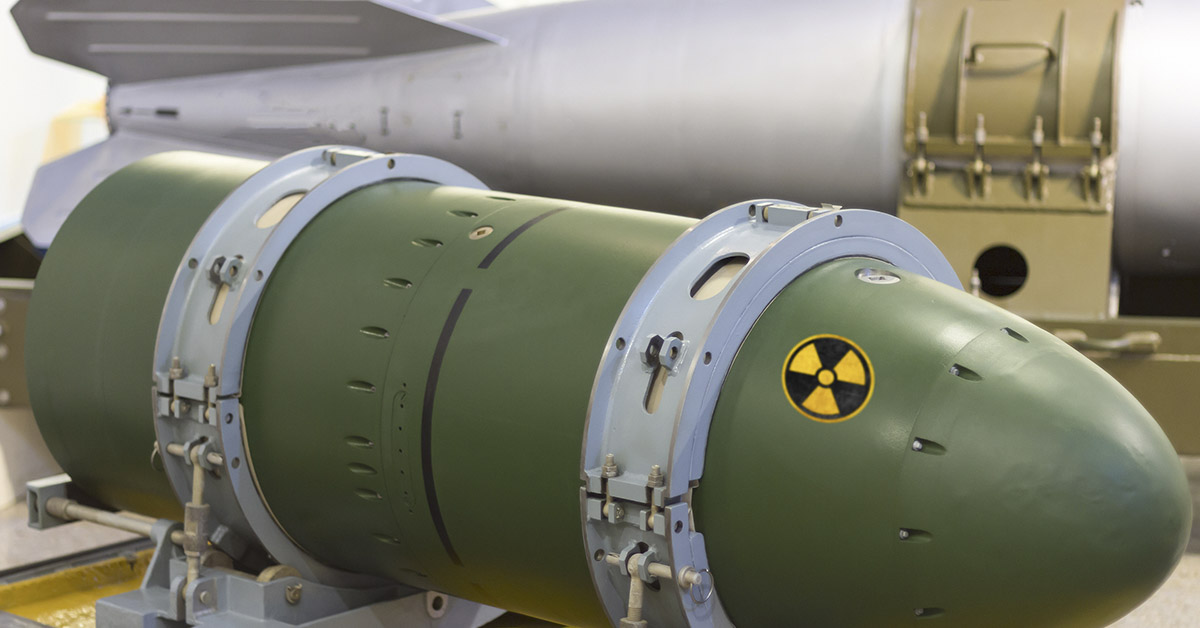Declassified Map Exposes America's First Nuclear Strike Targets

As global tensions escalate with ongoing conflicts in regions like Russia, Ukraine, Iran, and Israel, anxiety about the potential for nuclear warfare has surged. Social media platforms have become a hub for apocalyptic speculation, with memes and theories circulating widely about possible nuclear targets across the United States. Among the most alarming revelations is a declassified map that outlines potential nuclear strike zones, sparking widespread concern among Americans.
Washington D.C.: The Most Vulnerable Target
At the top of the list is the nation's capital, Washington D.C., which experts suggest would be the primary target in the event of a nuclear attack. According to former Assistant Secretary of Defense Andrew Weber, a "bolt out of the blue" strike on the capital is a persistent fear within defense circles. A one-megaton thermonuclear bomb aimed at the city could unleash devastation far beyond comprehension. Such a weapon produces thermal radiation five times hotter than the core of the sun, capable of vaporizing everything within its blast radius instantly.
The Pentagon, located just outside the capital, houses over 27,000 workers and serves as the nerve center of U.S. military operations. Its destruction would cripple national defense infrastructure and intelligence capabilities, making it an attractive target for hostile forces.
Major Metropolitan Centers Under Threat
Beyond Washington D.C., several major cities are identified as high-risk targets due to their strategic importance and population density. These include:
- New York City – Financial and media capital of the world
- Chicago – Transportation and logistics hub
- Houston – Energy sector powerhouse
- Los Angeles – Entertainment and aerospace industry epicenter
- San Francisco – Technology and innovation leader
Secondary cities such as Dallas-Fort Worth, Miami, and Philadelphia also appear on threat assessments due to their economic significance. Their dense populations and critical infrastructure make them ideal targets for maximum disruption and casualties.
Military Infrastructure and Nuclear Facilities
States housing nuclear facilities are also under scrutiny. Montana and North Dakota, home to numerous missile silos and launch facilities, are considered prime targets. Colorado and Wyoming host clusters of nuclear installations, further increasing their strategic value in potential conflict scenarios.
Across the country, approximately 90 nuclear facilities operate in states such as Alabama, Arizona, Maryland, New Jersey, Pennsylvania, and Tennessee. These sites represent both vital assets and potential liabilities during nuclear warfare, with their destruction posing catastrophic consequences for national security and energy infrastructure.
Casualty Projections: A Grim Outlook
Experts warn that casualty rates in targeted areas could reach as high as 75%. Dr. Irwin Redlener from Columbia University emphasizes that a nuclear detonation would result in a "horrific, catastrophic disaster with many unknown and cascading consequences." Within hours, hundreds of thousands could perish immediately. A one-megaton explosion would not only obliterate structures but also ignite firestorms and release lethal doses of radiation, claiming more lives in the days and weeks that follow.
Rural Areas: Lower Risk But Not Immune
While rural regions such as Idaho, Maine, Northern California, and Oregon are less likely to be directly targeted, they wouldn't escape unscathed. Fallout contamination and economic collapse would ripple through these areas, affecting agriculture and supply chains for years. The interconnectedness of modern society means no region is entirely safe from the fallout of a nuclear strike on a major city.
Global Tensions and Escalating Risks
With rising international conflicts, the likelihood of nuclear weapons being used in warfare has increased dramatically. The Bulletin of the Atomic Scientists' Doomsday Clock stands at 89 seconds to midnight—its closest ever to global annihilation. Regional confrontations, such as recent missile exchanges between Iran and Israel, demonstrate how quickly localized tensions can spiral into global catastrophe.
Lessons from History
Historical precedents offer sobering insights. The Hiroshima bombing, using a 15-kiloton weapon, killed approximately 80,000 people instantly. Modern warheads, often measured in megatons, possess exponentially greater destructive power. Hypothetical simulations of nuclear strikes on densely populated cities suggest death tolls reaching millions if detonated in urban centers like New York or Los Angeles.
Preparedness: A Looming Deficiency
Despite these grim projections, the United States remains inadequately prepared for a nuclear emergency. Emergency response systems would be overwhelmed by the scale of destruction. Hospitals would be unable to cope with the influx of radiation victims, and essential services would collapse under the weight of unprecedented devastation.
In conclusion, the declassified nuclear target map underscores the stark reality of America’s vulnerability in a potential nuclear conflict. With global tensions at historic levels, the risk of such an event cannot be ignored.
Post a Comment for "Declassified Map Exposes America's First Nuclear Strike Targets"
Post a Comment